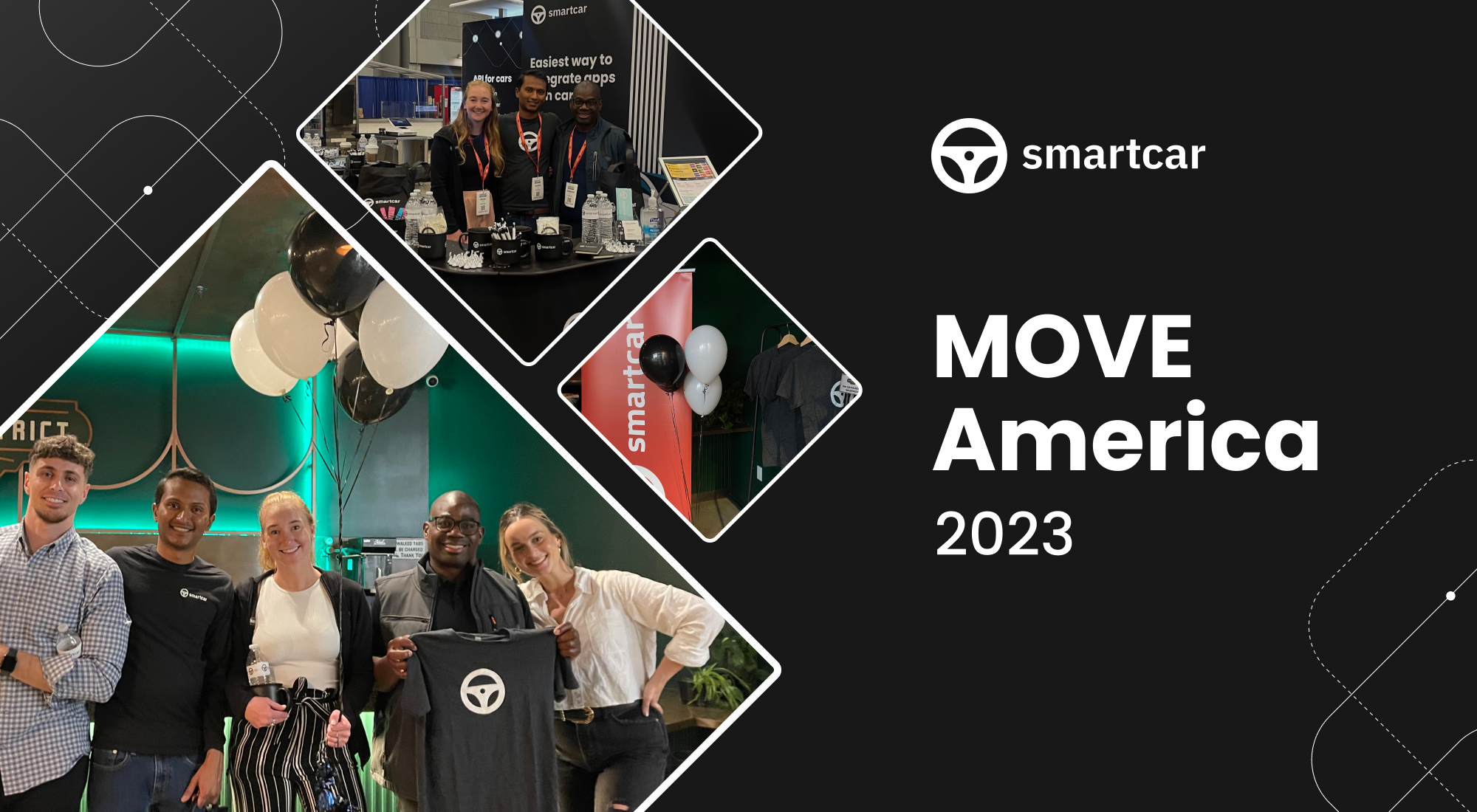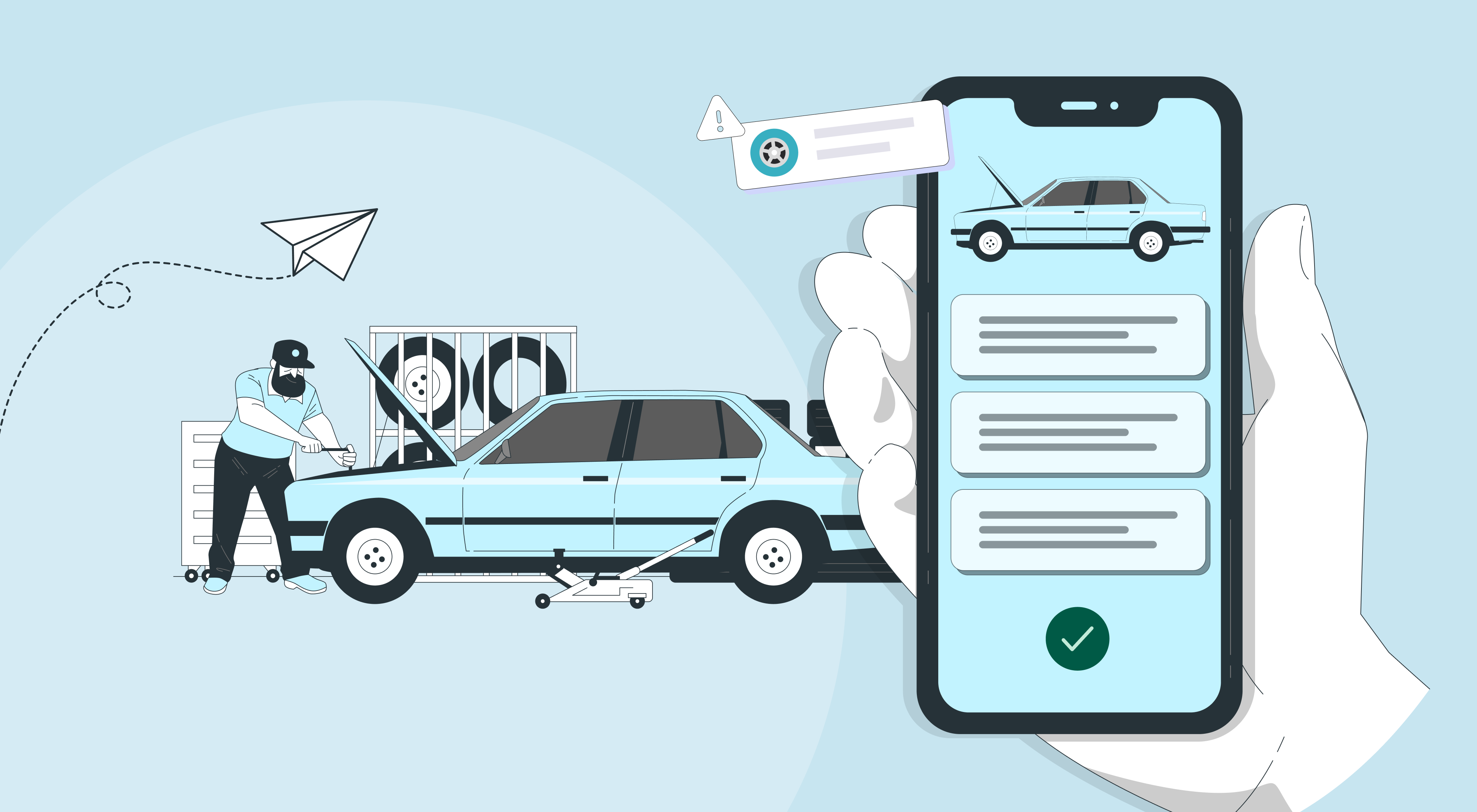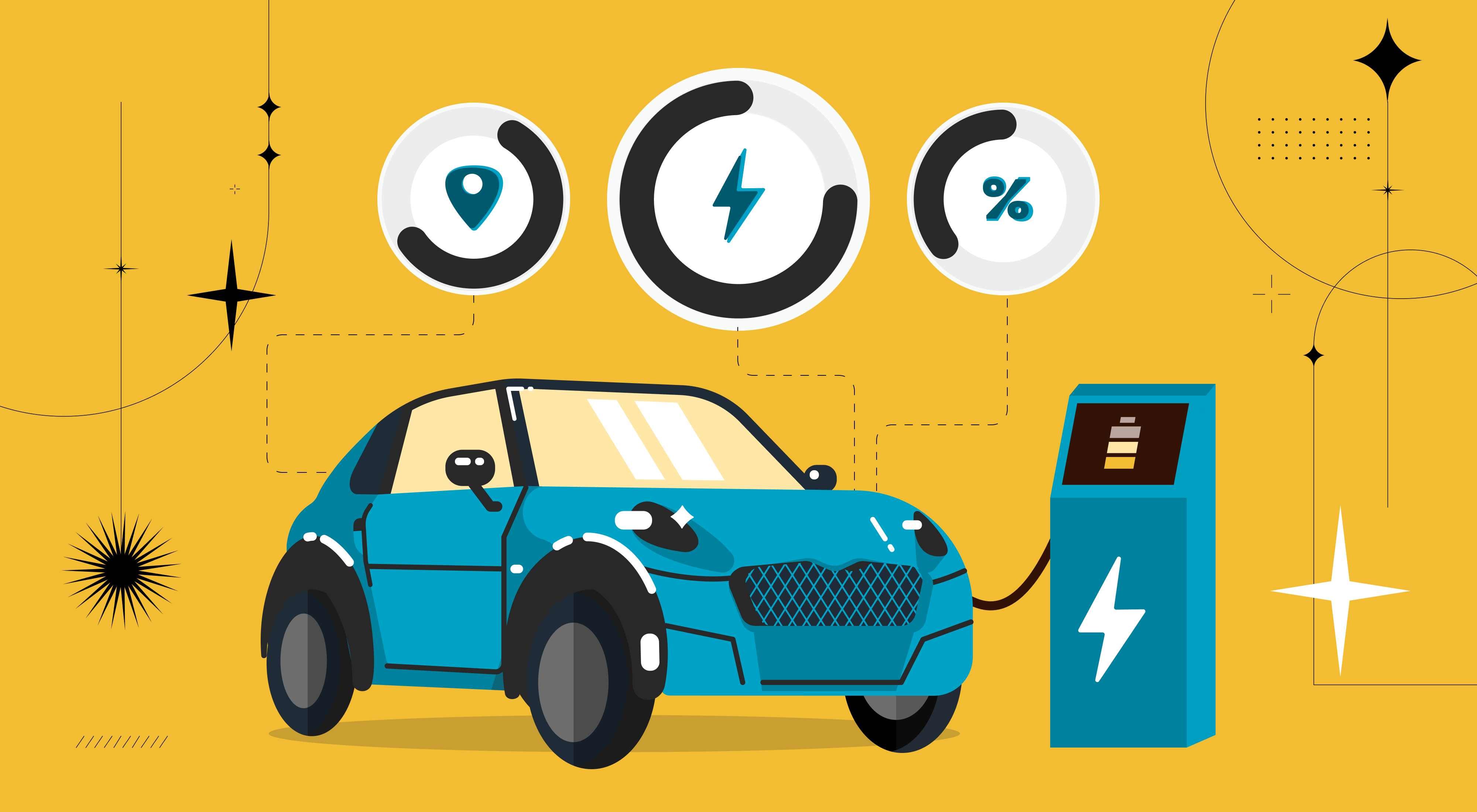After a successful time at MOVE London, we’re excited to have spent additional time meeting more customers and industry innovators at MOVE America in Austin, Texas! Although Smartcar is no stranger to the MOVE conference, this year was our first time being an exhibitor and not just an attendee. Thank you to everyone who stopped by our booth and happy hour event to discuss the future of connected car ecosystems.
When our team landed in Austin, it was a non-stop agenda — just the way we like it! This year, MOVE was all about reimagining mobility. From connectivity to electric vehicles, autonomous vehicles, and industry-specific transformations (like the software-driven shifts we see in auto insurance and fleets), the conference was buzzing with questions about what lies ahead for mobility technology and infrastructure.
Case in point: A popular question we heard from attendees at our booth and event revolved around our plans for 2024. There was a prevalent interest in the opportunity for connected car data across industries, and of course, Smartcar’s role in making that happen.

If you didn’t get a chance to say hi to us while we were there, here’s a recap of our most popular conversations with MOVE attendees:
What can we do about the EV charging experience?
EV sales for the second quarter of 2023 are up 48% from 2022.
The number of EV charging stations today is double what it was three years ago.
Yet EV drivers are not satisfied with their EV charging experience.
When we asked attendees about forward-looking trends they’re excited about, a common answer popped up: Solutions that make it easy for EV drivers to own EVs.
We previously had this discussion about EV software with our friends at Monta, DroneDeploy, and Sitetracker. EV ownership — despite its skyrocketing growth — is still a relatively new chapter in the auto industry’s long and storied history. The driver experience we have in place is still tailored toward gas-powered vehicles.
Drivers are concerned about the ease of locating functional chargers, installing chargers at home, planning ahead for long drives, and keeping EV charging costs low. Thankfully, many third-party apps are making EV ownership easier. We shared with attendees our experience helping customers build EV solutions filling these consumer experience gaps, like CAFU’s mission to help ease range anxiety with a mobile EV charging station that meets drivers at their location of choice.

Road usage charge for a modern world
More electric cars, less revenue from the gas tax — which isn’t a bad thing if governments start designing road usage charge programs (RUC) now. The race is on for local policymakers and tolling solutions, and they’re all curious to know how vehicle connectivity fits into the picture.
In the United States, 35 states are piloting road usage charge programs in their efforts to design a solution that’s equitable, secure, and frictionless. Policies are being tested to ensure drivers across different demographics are priced fairly and aren’t forced to add another cumbersome process to their vehicle ownership experience. With 97% of EVs being connected cars, introducing a completely software-based pricing system eliminates learning curves and reduces the possibility of errors.
Attendees at MOVE were excited to discuss progress in this space with Smartcar, given our experience helping tolling solutions launch successful hardware-free programs.
More recently, we helped the team at ClearRoad implement an RUC program without any manual entry of odometer readings, traffic camera installations, aftermarket hardware, or in-person toll transponders. They use Smartcar’s API to give both governments and drivers up-to-date odometer readings and transparent, consent-based data-sharing.

Where EVs fit in utility plans to upgrade power distribution
It’s been another summer of extreme heat and rolling blackouts. With more EVs connected to the grid now than ever before, the general public’s fear of grid instability is not unwarranted.
But utilities are working fast to put various demand response programs in place to cater to all groups of EV drivers. “Rate increases should NOT be a necessary element of EVs per se, although grid investments are long overdue in most areas for general reliability purposes,” says Bill LeBlanc, Chief Catalyst at Rolling Energy Resources, in a guest blog for Smartcar.
A common question that popped up for our team was, “How are utilities integrating with connected cars to drive grid sustainability forward, fast?”
At Smartcar, we’re lucky to sit at the intersection of grid modernization efforts and clean energy innovation. Over the past few years, we’ve witnessed customers like Rolling Energy Resources strengthen utility partnerships by using APIs to quickly access valuable data that EV charging hardware cannot provide — like a vehicle’s state of charge.
By partnering with DERMS software and managed charging providers like Rolling Energy Resources to design proactive managed charging, one can provide detailed load forecasts, and incentivize charging during off-peak hours.
Didn’t catch us there? Let’s talk!
As first-year exhibitors, we’re honored at the opportunity to meet with so many passionate teams in the mobility space. Despite the many moving parts that are continuously evolving across different mobility sectors, MOVE showed us that we’re all moving toward a shared goal. It’s inspiring, and we’re more motivated than ever to keep building strong relationships with the many game-changers in this industry.
If you didn’t get a chance to stop by our booth or happy hour event, we’d love to hear from you! You can request a demo with our team of experts or connect with our team members who were at MOVE America — Paige, Dammand, and Andy.




